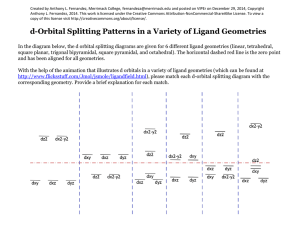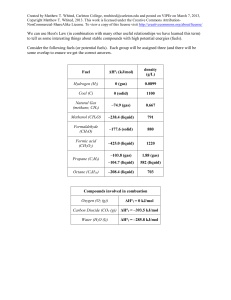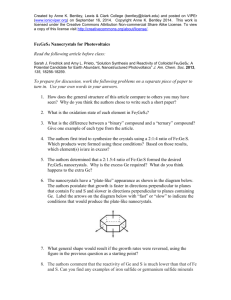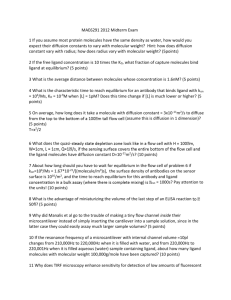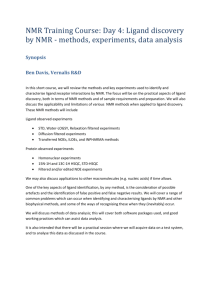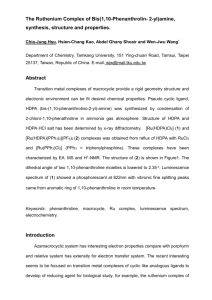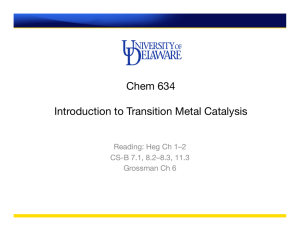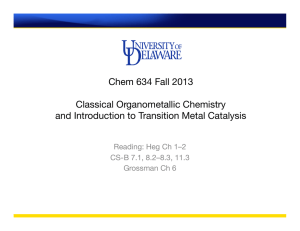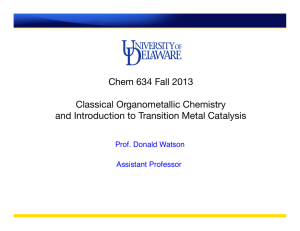Cross coupling group exercise (for VIPEr)
advertisement
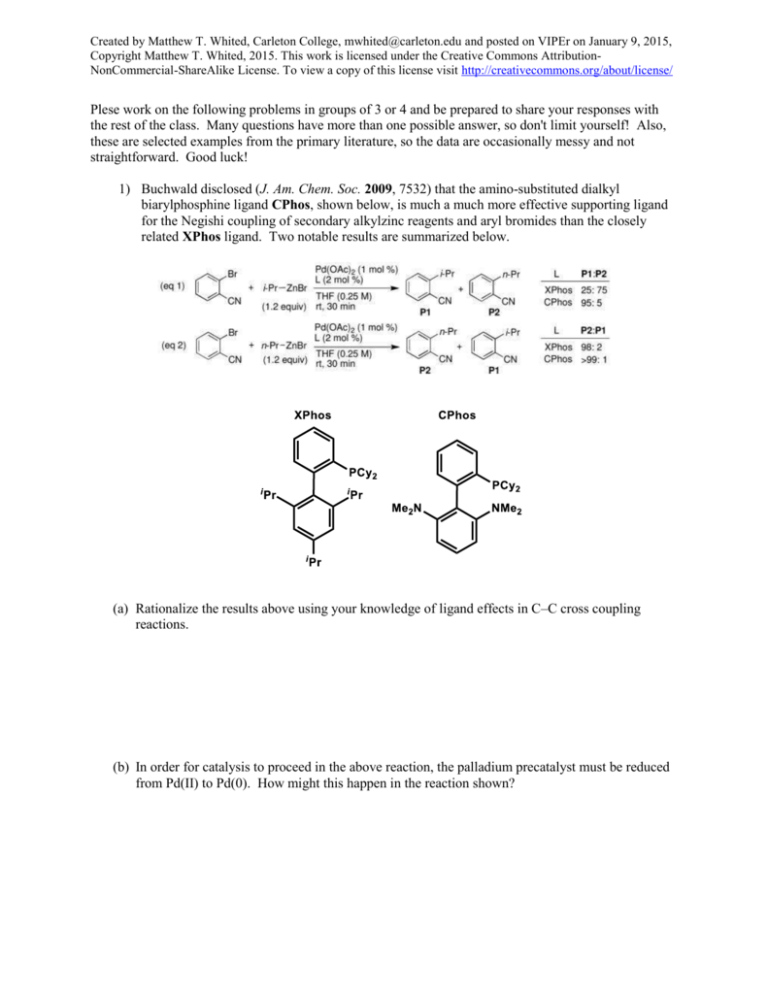
Created by Matthew T. Whited, Carleton College, mwhited@carleton.edu and posted on VIPEr on January 9, 2015, Copyright Matthew T. Whited, 2015. This work is licensed under the Creative Commons AttributionNonCommercial-ShareAlike License. To view a copy of this license visit http://creativecommons.org/about/license/ Plese work on the following problems in groups of 3 or 4 and be prepared to share your responses with the rest of the class. Many questions have more than one possible answer, so don't limit yourself! Also, these are selected examples from the primary literature, so the data are occasionally messy and not straightforward. Good luck! 1) Buchwald disclosed (J. Am. Chem. Soc. 2009, 7532) that the amino-substituted dialkyl biarylphosphine ligand CPhos, shown below, is much a much more effective supporting ligand for the Negishi coupling of secondary alkylzinc reagents and aryl bromides than the closely related XPhos ligand. Two notable results are summarized below. (a) Rationalize the results above using your knowledge of ligand effects in C–C cross coupling reactions. (b) In order for catalysis to proceed in the above reaction, the palladium precatalyst must be reduced from Pd(II) to Pd(0). How might this happen in the reaction shown? Created by Matthew T. Whited, Carleton College, mwhited@carleton.edu and posted on VIPEr on January 9, 2015, Copyright Matthew T. Whited, 2015. This work is licensed under the Creative Commons AttributionNonCommercial-ShareAlike License. To view a copy of this license visit http://creativecommons.org/about/license/ (c) The Negishi reaction shown in (1) gives a low yield (<5%) of product with a high P1:P2 ratio (>95:5) if the di-tert-butylphosphine analogue of CPhos is used. Given this information, what can we say about the kinetics of the reaction utilizing the bulky di-tert-butylphosphine ligand? Why are the results different from those with other ligands shown? 2) Cross-coupling reactions between two sp3-hybridized carbon centers are challenging. In 2001, Fu reported (J. Am. Chem. Soc. 2001, 10099) that palladium catalysts can facilitate the Suzuki coupling of such substrates, as shown below. However, the reaction is very sensitive to the type of ligand used. Using what you know about cross-coupling reactions in general and specifically the Suzuki reaction, answer the following questions. Ligand PCy3 P(i-Pr)3 P(t-Bu)3 dppf PPh3 % yield of P1 85 68 <2 <2 <2 % yield of P2 <2 6 21 12 <2 (a) The reaction shown above does not proceed in the absence of potassium phosphate (or other appropriate additive). What is the role of K3PO4·H2O (the hydrate of potassium phosphate) in the reaction? Created by Matthew T. Whited, Carleton College, mwhited@carleton.edu and posted on VIPEr on January 9, 2015, Copyright Matthew T. Whited, 2015. This work is licensed under the Creative Commons AttributionNonCommercial-ShareAlike License. To view a copy of this license visit http://creativecommons.org/about/license/ (b) When PPh3 is used in the reaction shown above, neither P1 nor P2 is observed. However, Suzuki has reported (Chem. Lett. 1992, 691) that Pd(PPh3)4 does serve as a catalyst for the following closely related reaction. Why does triphenylphosphine work as a supporting ligand for this reaction but not for the one reported by Fu? (c) The amount of P1 (the coupled product) and P2 (effectively the elimination product from dodecyl bromide) varies quite a bit depending on the ligand used. Based on the results shown above, draw the steps leading to formation of P2 (HINT: You do not need to invoke the organoboron reagent). (d) Why does product P2 not form in Fu’s reaction when PPh3 is used? (e) Normally, larger ligands such as dppf and P(t-Bu)3 are more effective at preventing undesired reactions than slightly smaller ones like PCy3 due to enhanced rates of reductive elimination, but in this case large ligands lead to greater byproduct formation. Why is this unusual effect observed (HINT: Think about which steps are helped and hindered by the presence of large ligands)?
